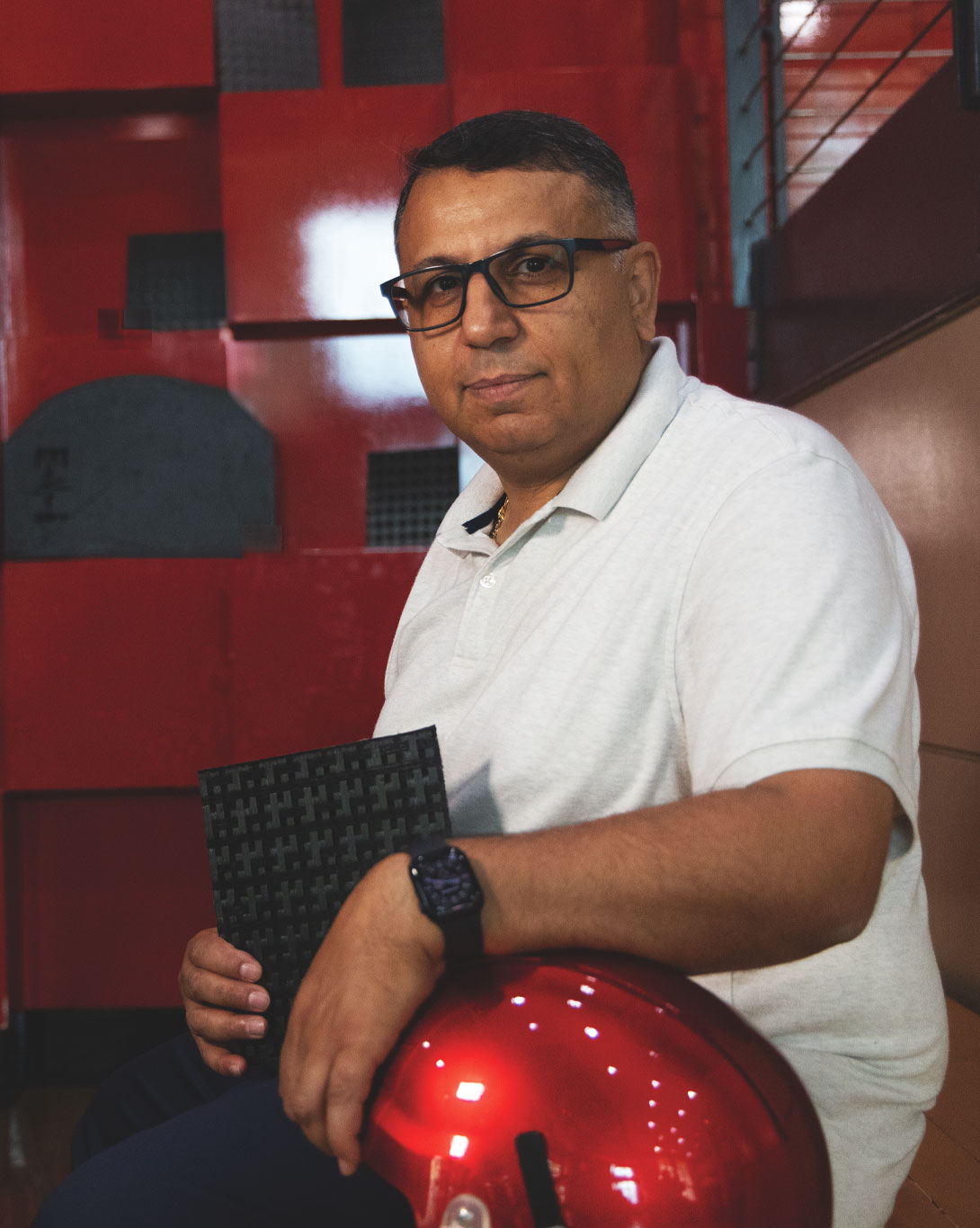Where Science Meets Sports

Inside George Youssef’s SDSU lab, student engineers are developing patented foams to protect athletes, first responders and service members—while learning the business of innovation.
By Sarah White
WHAT’S THE BEST WAY TO MINIMIZE THE IMPACT OF A FOOTBALL TACKLE and its concussion-inducing shock wave? The answer might lie in a San Diego State University lab determined to bring its innovative materials to market.
George Youssef, an SDSU mechanical engineering professor, and the doctoral, master’s and undergraduate student engineers in his Experimental Mechanics Laboratory have patented nearly a dozen materials and manufacturing techniques designed to protect athletes, first responders and active-duty service members from occupational hazards.
One invention is a foam that can be customized to provide a cushioned fit inside helmets for football players or packaging for fragile cargo.
“When we made it, we were just making an advanced material,” Youssef says.
Youssef and his team set out to prove they could create a foam that no one else could—and they succeeded. Testing showed the foam could reduce collision forces by 20% and could be produced more sustainably than industry-standard alternatives.
The lab began pursuing commercialization by interviewing potential customers and evaluating the market for applications in insoles, ergonomic mats for workers on their feet and protective gear. An early version of the foam was later featured in an NFL helmet innovation challenge and licensed by Super Foam, a Southern California startup.
“What has been impressive to me about George’s success is his fast navigation of the business, technical and corresponding emotional challenges,” says Tommy Martindale, who oversees intellectual property and patenting for SDSU. “I have never seen his will to keep moving
forward waver.
“His perseverance helped him launch a startup that has raised capital and won numerous awards in pitch competitions, with a second company in development.”
Even with early success and endorsement from investors, Youssef is always brainstorming another exciting idea to transform into a business.
“It’s easy to have ideas, but it’s hard to make a product,” he says.
Youssef ’s entrepreneurial experience bridges that gap and benefits his students in the process. Early in his journey, he sold cellphones while teaching himself English by studying an engineering parts catalog.
Years later, after leaving an industry job, he spotted in that same catalog a creation he had designed there—now for sale with no credit to him.
Unable to afford lawyers to articulate the novelty of his first patentable technology, he continued striving for a patent in his own name—what he calls the pinnacle of an engineer’s career.
Now that he has reached that pinnacle many times over, he’s focused on passing along lessons learned—running his lab like a small engineering firm, with funding agencies as the C-suite, and papers and patents as the products.
As part of the lab’s ethos, Youssef emphasizes both devising materials to solve critical problems and serving future customers throughout the purchasing and deployment of a solution.
Youssef, named SDSU’s 2025 Innovator of the Year, is just as likely to be found on the floor repairing equipment as leading a tour of the lab for new investors.
That balance of hands-on work and big-picture vision carries into the lab’s culture. Lab meetings cover not only technical troubleshooting but also intellectual property and royalty negotiations, using the same language students will encounter as professionals.
“If you’re going to produce good engineers, that’s the environment they want to be in,” Youssef says. “All my students graduate and know what they’re doing on day one.”
As evidence, he points to the student co-inventor of the first generation of foams now advancing in the golf industry, along with multiple alumni and current students already credited with papers and patents.
The lab is also developing second-generation foams to better absorb both shrapnel and shock waves from explosions and to self-extinguish rapidly if ignited. And on deck are lightweight, 3D-printed carbon fiber outer shells for helmets—plus more ideas moving through the patent pipeline.
Youssef sees generating patents as his responsibility and the lab as a training ground for business-savvy engineering leaders. So far, his approach has led to a foam no one else could make and many learning opportunities along the way—always with one eye on what’s coming next.
